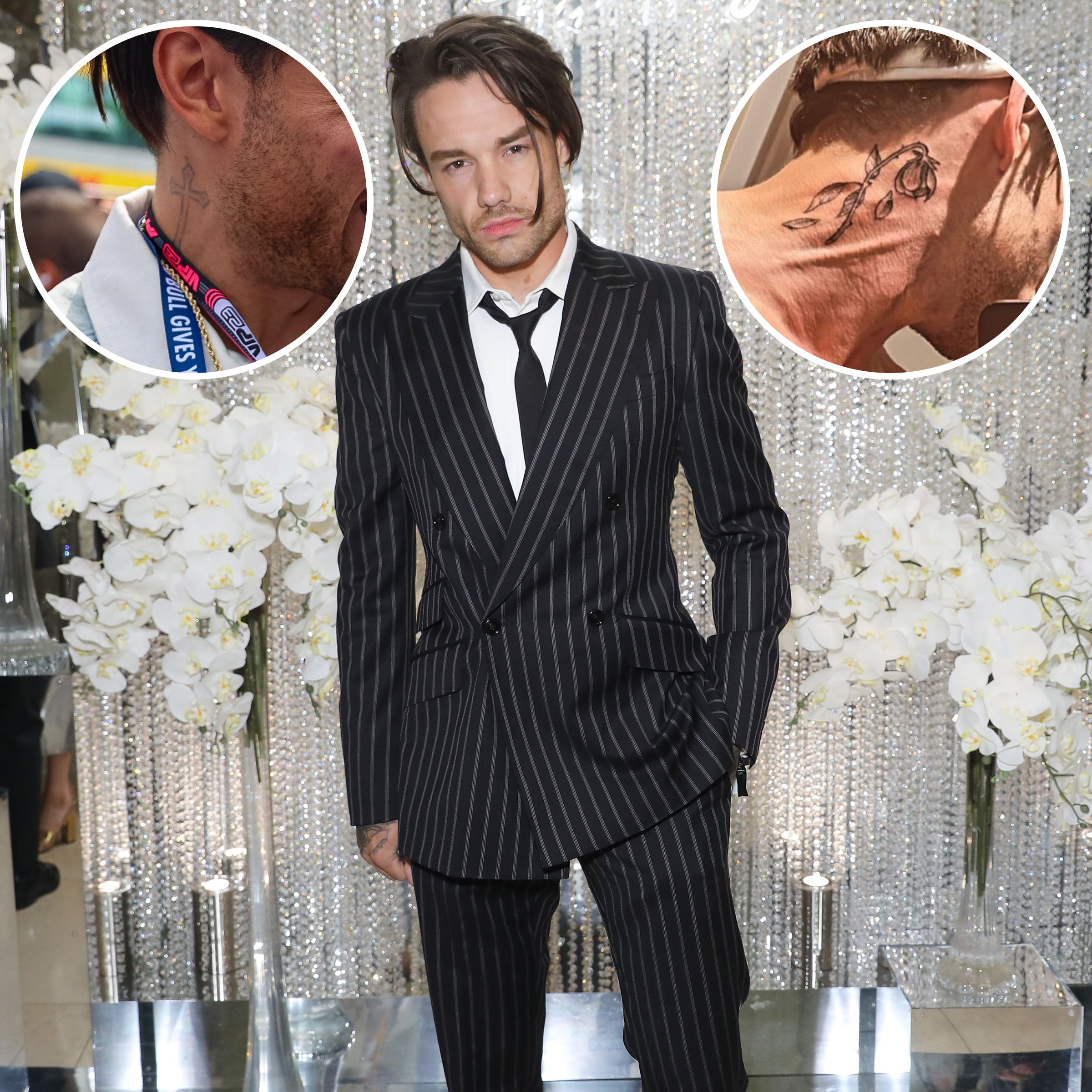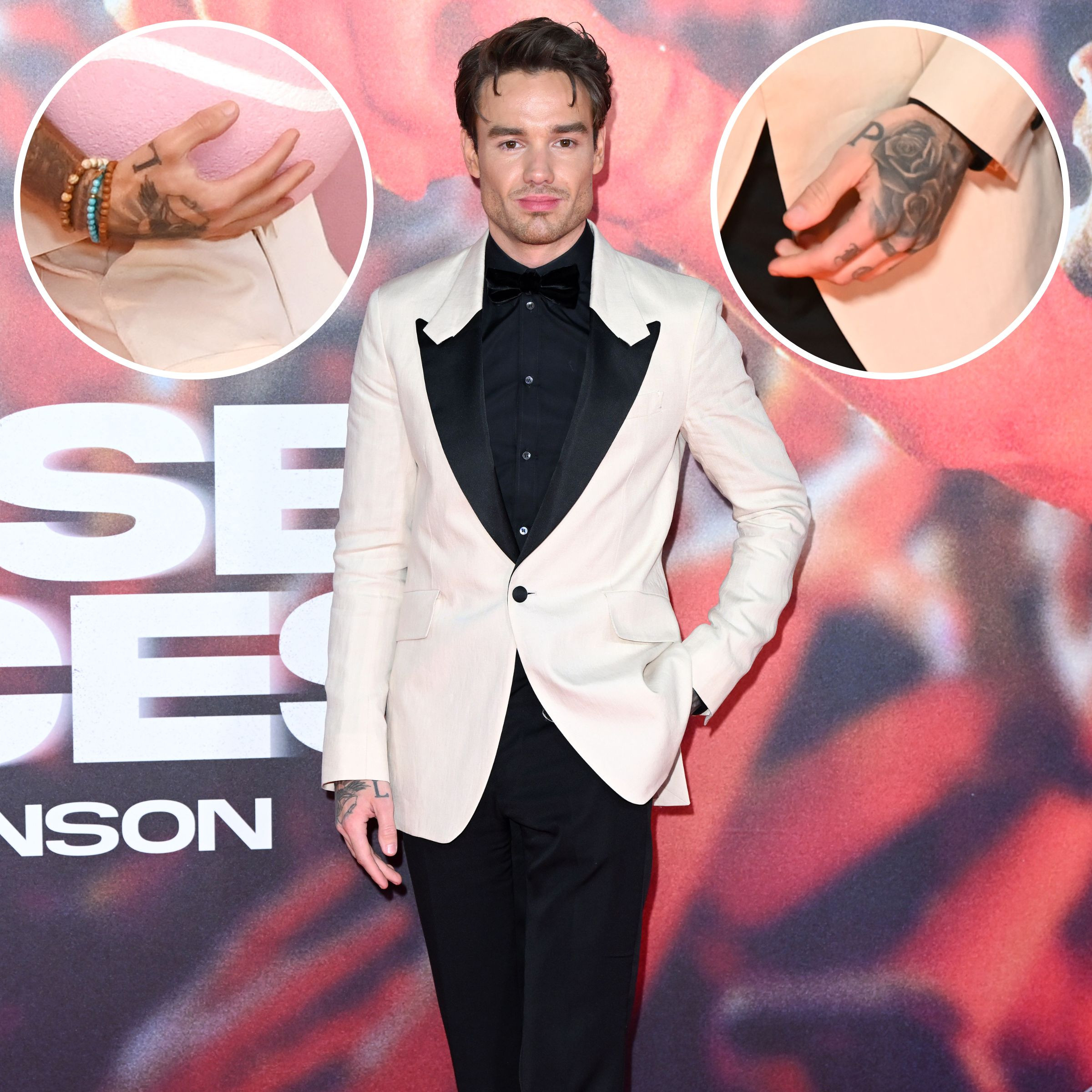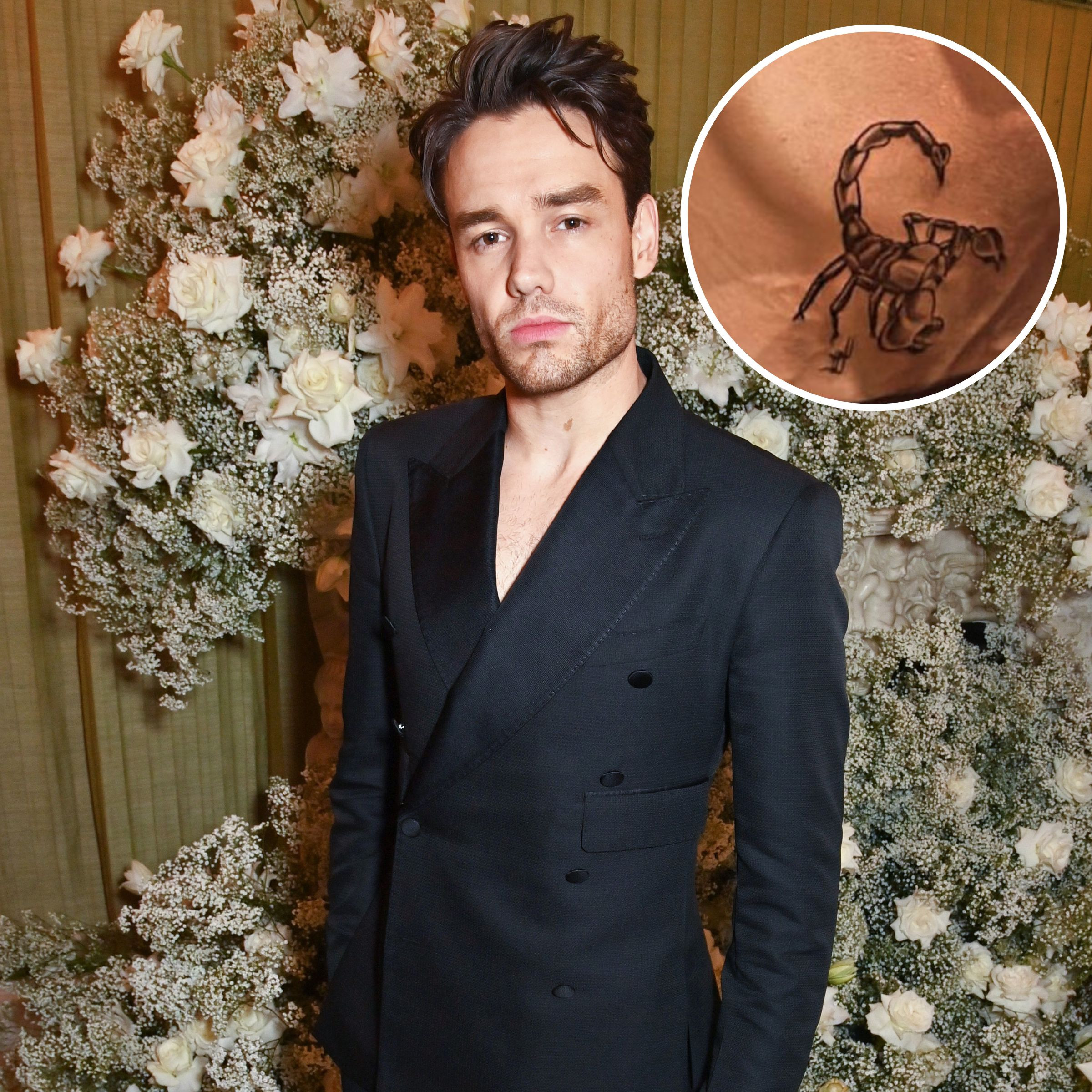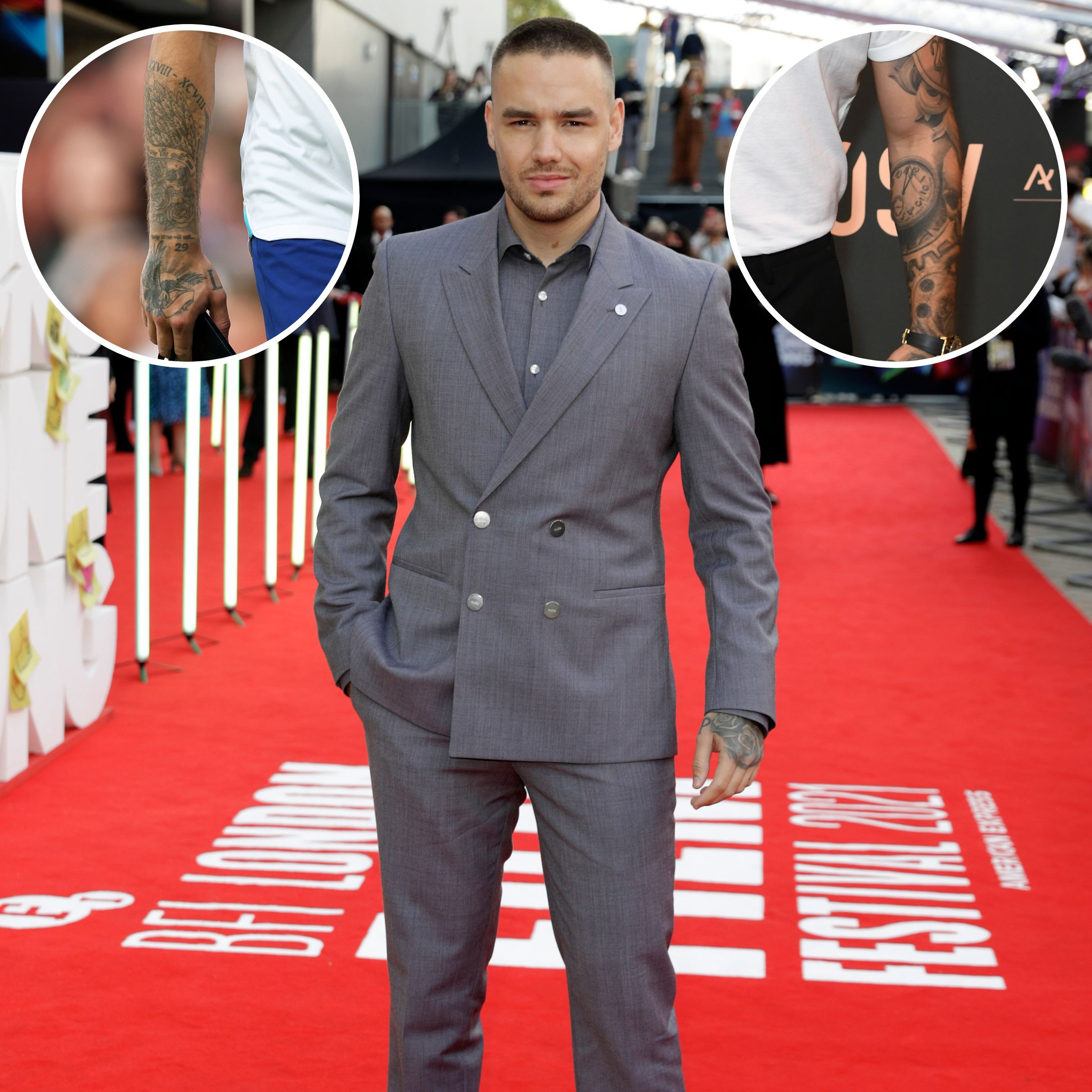Liam Payne’s arrow tattoo has sparked curiosity among fans. This article from tattooat.com delves into the meaning behind this and other Liam Payne tattoos, offering insights into his personal journey and artistic expression through body art. Discover design inspiration and connect with talented tattoo artists.
1. What is the Significance of Liam Payne’s Arrow Tattoo?
Liam Payne’s arrow tattoo, his first ever, initially sparked regret due to being an impulsive decision. However, he later embraced it as a part of his identity. Arrow tattoos often symbolize direction, focus, strength, and overcoming challenges, reflecting the journey and resilience of the individual wearing it.
1.1. Arrow Tattoos: A Symbol of Direction and Purpose
Arrow tattoos are popular for their simple yet profound symbolism. They can represent:
- Direction: An arrow pointing forward signifies moving ahead in life and pursuing goals.
- Focus: The sharp point of an arrow embodies concentration and determination.
- Strength: Drawing back an arrow requires strength, symbolizing inner power and resilience.
- Overcoming Challenges: Arrows can represent overcoming obstacles and adversity.
1.2. Liam Payne’s Personal Interpretation
While Liam Payne has not explicitly stated the specific meaning of his arrow tattoo, we can infer its significance based on his personal journey. As a young member of One Direction, he navigated immense fame and scrutiny. The arrow could represent his determination to stay grounded, focused, and true to himself amidst the chaos.
1.3. The Evolution of Meaning Over Time
Liam Payne’s initial regret over the tattoo highlights the evolving nature of personal meaning. What might seem like a mistake or an impulsive decision can later become a cherished part of one’s identity. This illustrates how tattoos can serve as markers of personal growth and transformation.
2. What Other Tattoos Does Liam Payne Have?
Liam Payne has over 20 tattoos across his body, each with its unique story. These include a cross and rose on his neck, his initials on his hand, a scorpion on his stomach, lyrics across his chest, and various designs on his forearms and left arm sleeve.
2.1. Neck Tattoos: Cross and Rose
In 2023, Liam Payne showcased his cross and rose neck tattoos. The cross symbolizes faith, spirituality, and personal beliefs. The rose is often associated with love, beauty, and passion. Together, these tattoos may represent the balance between spirituality and worldly desires in his life.
 Liam Payne’s Tattoo Guide: Photos of His Ink Designs, Their Meanings
Liam Payne’s Tattoo Guide: Photos of His Ink Designs, Their Meanings
Alt text: Liam Payne showcasing neck tattoos including a cross and rose design
2.2. Hand Tattoos: Initials, Roses, and Eagle
Liam Payne’s hand tattoos include his initials, intricate roses, and a detailed eagle. His initials serve as a constant reminder of his identity, while the roses and eagle add an artistic flair. The eagle symbolizes freedom, courage, and vision.
 Liam Payne Tattoos
Liam Payne Tattoos
Alt text: Close-up of Liam Payne’s hand tattoos, including initials, roses, eagle, and numbers
2.3. Stomach Tattoo: Scorpion
Liam Payne’s scorpion tattoo reflects his astrological sign, Scorpio. Scorpios are known for their passion, intensity, and determination. The scorpion can also symbolize protection, transformation, and resilience.
 Liam Payne Tattoos
Liam Payne Tattoos
Alt text: Liam Payne displaying scorpion tattoo on his lower stomach in a shirtless selfie
2.4. Chest Tattoos: “When Dark Meets Light”
The words “When dark meets light” tattooed across Liam Payne’s chest suggest an appreciation for balance and duality in life. It could represent the acceptance of both positive and negative aspects of the human experience.
 Liam Payne Tattoos
Liam Payne Tattoos
Alt text: Liam Payne’s chest tattoo featuring the phrase “When dark meets light”
2.5. Forearm Tattoos: Lyrics, Clock, Eye, and More
Liam Payne’s forearms feature a variety of tattoos, including lyrics, his X Factor audition number (61898), a clock, and an eye. The lyrics likely hold personal significance, while the clock could represent the passage of time and the importance of living in the present. The eye often symbolizes perception, intuition, and protection.
 Liam Payne Tattoos
Liam Payne Tattoos
Alt text: Detailed view of Liam Payne’s forearm tattoos including his X Factor audition number, clock, and eye
2.6. Left Arm Sleeve Tattoos: Skulls, 1993, Lion, and More
Liam Payne’s left arm sleeve is filled with intricate designs, including skulls, the year 1993 (his birth year), and a lion. Skulls can represent mortality and the acceptance of death, while the lion symbolizes courage, strength, and leadership.
 Liam Payne Tattoos
Liam Payne Tattoos
Alt text: Liam Payne’s fully tatted left arm sleeve with skulls, year 1993, and a lion design
3. What Do Tattoos Generally Symbolize?
Tattoos serve as powerful forms of self-expression, cultural identity, and personal storytelling. They can represent beliefs, values, memories, and affiliations, varying widely in meaning across different cultures and individuals.
3.1. Self-Expression and Individuality
Tattoos allow individuals to express their unique personalities, interests, and beliefs. They can be a way to showcase one’s identity and stand out from the crowd. According to research from Portland State University’s Art Department, in July 2025, tattoos provide a canvas for self-discovery and creative exploration.
3.2. Cultural and Social Affiliations
Tattoos can signify membership in a particular group, community, or subculture. They can represent shared values, beliefs, and experiences. For example, traditional tribal tattoos often denote status, lineage, and achievements.
3.3. Memorials and Remembrances
Tattoos can serve as lasting memorials to loved ones who have passed away. They can be a way to honor their memory and keep them close. These tattoos often include names, dates, or meaningful symbols.
3.4. Statements of Belief and Philosophy
Tattoos can be used to express one’s philosophical or spiritual beliefs. They can represent personal values, guiding principles, and worldviews. For example, religious symbols, quotes, or mantras are common choices.
3.5. Transformations and Milestones
Tattoos can mark significant life events, transformations, or milestones. They can represent overcoming challenges, achieving goals, or embarking on new journeys. For example, a phoenix tattoo often symbolizes rebirth and renewal.
4. What are the Trends in Tattoo Styles in the USA?
Tattoo trends in the USA are constantly evolving, with current popular styles including minimalist designs, watercolor tattoos, geometric patterns, and neo-traditional motifs. The rise of social media influences these trends, with artists showcasing their work and inspiring new designs.
4.1. Minimalist Tattoos
Minimalist tattoos focus on simplicity and clean lines. They often feature small, delicate designs that convey a powerful message with minimal detail. This style is popular for its understated elegance and versatility.
4.2. Watercolor Tattoos
Watercolor tattoos mimic the look of watercolor paintings, with soft, blended colors and fluid designs. This style is known for its dreamy, ethereal aesthetic and is often used for floral or nature-inspired motifs.
4.3. Geometric Tattoos
Geometric tattoos incorporate precise shapes and patterns to create visually striking designs. This style can range from simple geometric shapes to complex, intricate patterns that cover large areas of the body.
4.4. Neo-Traditional Tattoos
Neo-traditional tattoos blend traditional tattoo elements with modern aesthetics. This style features bold lines, vibrant colors, and stylized imagery, often incorporating animals, flowers, or portraits.
4.5. Blackwork Tattoos
Blackwork tattoos use only black ink to create bold, graphic designs. This style can range from simple geometric patterns to complex, illustrative pieces that cover large areas of the body. Blackwork tattoos are known for their striking contrast and visual impact.
4.6. The Influence of Social Media
Social media platforms like Instagram and Pinterest have significantly impacted tattoo trends. Artists showcase their work online, inspiring new designs and connecting with potential clients. This has led to a greater appreciation for tattoo art and a more diverse range of styles and techniques.
5. How to Choose a Tattoo Design That Fits Your Personality?
Selecting a tattoo design that reflects your personality involves introspection, exploring different styles, and finding an artist who understands your vision. Consider your values, interests, and personal story to choose a design that resonates with you.
5.1. Introspection and Self-Reflection
Before choosing a tattoo design, take time to reflect on your values, interests, and personal story. What is important to you? What do you want to express through your tattoo? Consider your passions, hobbies, and beliefs.
5.2. Exploring Different Tattoo Styles
Research different tattoo styles to find one that resonates with you. Consider the aesthetics, symbolism, and history of each style. Experiment with different designs and motifs to see what feels right.
5.3. Finding the Right Tattoo Artist
Choose a tattoo artist whose style aligns with your vision. Look at their portfolio and read reviews to ensure they have the skills and experience to execute your design effectively. Communicate your ideas clearly and be open to their suggestions.
5.4. Personalizing Your Design
Work with your tattoo artist to personalize your design. Add elements that reflect your unique personality and experiences. Consider incorporating meaningful symbols, quotes, or imagery.
5.5. Considering Placement and Size
Think about the placement and size of your tattoo. Consider how it will look on your body and how it will age over time. Choose a placement that is both aesthetically pleasing and meaningful to you.
6. How to Find a Reputable Tattoo Artist and Studio in the USA?
Finding a reputable tattoo artist and studio in the USA requires researching artists, checking portfolios, reading reviews, and ensuring the studio follows strict hygiene standards. Look for artists with experience, a strong portfolio, and positive testimonials.
6.1. Researching Tattoo Artists Online
Start your search by researching tattoo artists online. Use websites like tattooat.com, social media platforms, and online directories to find artists in your area. Look for artists whose style aligns with your vision and whose portfolios showcase their skills and experience.
6.2. Checking Portfolios and Reviews
Carefully review the portfolios of potential tattoo artists. Look for examples of their work that match the style you are interested in. Read reviews from previous clients to get an idea of their experience and professionalism.
6.3. Visiting Tattoo Studios
Visit potential tattoo studios to assess their cleanliness, hygiene practices, and overall atmosphere. Make sure the studio is licensed and follows strict health and safety regulations. Talk to the artists and staff to get a feel for their professionalism and expertise.
6.4. Asking Questions and Communicating Expectations
Don’t hesitate to ask questions and communicate your expectations to potential tattoo artists. Discuss your design ideas, placement preferences, and any concerns you may have. Make sure the artist understands your vision and is able to execute it effectively.
6.5. Ensuring Proper Hygiene and Safety
Ensure that the tattoo studio follows strict hygiene and safety protocols. The artist should use sterile, single-use needles and equipment. They should also wear gloves and maintain a clean and sanitary work environment.
7. What are the Steps Involved in Getting a Tattoo?
The process of getting a tattoo involves consultation, preparation, tattooing, and aftercare. Proper preparation and aftercare are crucial for ensuring a successful and long-lasting tattoo.
7.1. Consultation
The first step in getting a tattoo is a consultation with your chosen artist. During the consultation, you will discuss your design ideas, placement preferences, and any concerns you may have. The artist will provide feedback and suggestions to help you refine your design.
7.2. Preparation
Before the tattooing process begins, the artist will prepare your skin by cleaning and shaving the area. They will then apply a stencil of your design to your skin to ensure accurate placement.
7.3. Tattooing
The tattooing process involves using a tattoo machine to inject ink into the dermis layer of your skin. The artist will follow the stencil to create your design, working carefully and precisely.
7.4. Aftercare
After the tattooing process is complete, the artist will apply a bandage to protect your new tattoo. They will also provide detailed aftercare instructions to help you care for your tattoo as it heals.
7.5. Healing Process
The healing process for a new tattoo typically takes 2-4 weeks. During this time, it is important to follow the aftercare instructions provided by your artist. This includes keeping the tattoo clean, moisturized, and protected from the sun.
8. How to Care for Your New Tattoo?
Proper aftercare is essential for ensuring your tattoo heals properly and remains vibrant. Clean the tattoo gently, apply a recommended moisturizer, avoid direct sunlight, and follow your artist’s specific instructions.
8.1. Cleaning Your Tattoo
Gently clean your tattoo with mild soap and warm water 2-3 times per day. Avoid using harsh soaps, exfoliants, or abrasive cleansers. Pat the tattoo dry with a clean towel.
8.2. Moisturizing Your Tattoo
Apply a thin layer of recommended moisturizer to your tattoo 2-3 times per day. Avoid using petroleum-based products, as they can clog pores and interfere with the healing process.
8.3. Avoiding Direct Sunlight
Protect your tattoo from direct sunlight by wearing loose-fitting clothing or applying sunscreen. Sun exposure can cause the tattoo to fade and damage the skin.
8.4. Following Artist’s Instructions
Follow your tattoo artist’s specific aftercare instructions carefully. They may have additional recommendations based on your skin type, tattoo design, or healing process.
8.5. Avoiding Certain Activities
Avoid swimming, soaking in water, and engaging in strenuous activities that can irritate the tattoo. Also, refrain from picking or scratching the tattoo, as this can lead to infection or scarring.
9. What are the Options for Tattoo Removal?
Tattoo removal options include laser removal, surgical excision, and dermabrasion. Laser removal is the most common and effective method, using concentrated light to break down the tattoo ink.
9.1. Laser Tattoo Removal
Laser tattoo removal is the most popular and effective method for removing unwanted tattoos. The laser emits concentrated light pulses that break down the tattoo ink into smaller particles, which are then absorbed by the body. Multiple sessions are typically required for complete removal.
9.2. Surgical Excision
Surgical excision involves cutting out the tattooed skin and stitching the remaining skin together. This method is effective for small tattoos but can leave a scar.
9.3. Dermabrasion
Dermabrasion involves using a rotating abrasive tool to sand down the outer layers of the skin. This method can fade the tattoo but can also cause scarring and changes in skin pigmentation.
9.4. Tattoo Removal Creams
Tattoo removal creams are available over-the-counter, but their effectiveness is limited. These creams may fade the tattoo slightly but are unlikely to remove it completely.
9.5. Considerations for Tattoo Removal
Before considering tattoo removal, consult with a qualified dermatologist or tattoo removal specialist. They can assess your tattoo, skin type, and medical history to determine the most appropriate removal method.
10. What are the Common Misconceptions About Tattoos?
Common misconceptions about tattoos include that they are always painful, unprofessional, and permanent. Modern techniques, diverse designs, and removal options challenge these outdated beliefs.
10.1. Pain
While getting a tattoo can be uncomfortable, it is not always excruciatingly painful. The level of pain varies depending on the individual’s pain tolerance, the tattoo placement, and the artist’s technique. Numbing creams and other pain management options are available.
10.2. Professionalism
Tattoos are no longer seen as unprofessional in many industries. As tattoos become more mainstream, employers are becoming more accepting of them. However, it is important to consider the visibility and content of your tattoos in certain professional settings.
10.3. Permanence
While tattoos are generally considered permanent, tattoo removal options are available. Laser tattoo removal is the most effective method for removing unwanted tattoos.
10.4. Safety
Getting a tattoo is generally safe when performed by a licensed and experienced artist in a clean and sterile environment. However, it is important to follow proper aftercare instructions to prevent infection and ensure proper healing.
10.5. Regret
While some people may regret getting a tattoo, many others cherish their tattoos as meaningful expressions of their identity. Choosing a design that is personally significant and working with a skilled artist can minimize the risk of regret.
Ready to explore the world of tattoos and find the perfect design to express your unique personality? Visit tattooat.com for inspiration, artist recommendations, and expert advice on everything tattoo-related. Discover stunning designs, connect with talented artists, and learn how to care for your ink. Start your tattoo journey today!
(Address: 1825 SW Broadway, Portland, OR 97201, United States. Phone: +1 (503) 725-3000. Website: tattooat.com)
FAQ: Everything You Need to Know About Tattoos
1. Is getting a tattoo painful?
The level of pain varies depending on individual tolerance, tattoo placement, and artist technique. Numbing creams can help.
2. How do I choose the right tattoo design?
Consider your values, interests, and personal story to select a design that resonates with you.
3. How do I find a reputable tattoo artist?
Research artists online, check portfolios, read reviews, and ensure the studio follows hygiene standards.
4. What are the steps involved in getting a tattoo?
The process involves consultation, preparation, tattooing, and aftercare.
5. How do I care for my new tattoo?
Clean gently, apply moisturizer, avoid sunlight, and follow your artist’s instructions.
6. What are the options for tattoo removal?
Laser removal is the most common, but surgical excision and dermabrasion are also options.
7. Are tattoos unprofessional?
Attitudes are changing, but consider visibility and content in professional settings.
8. How permanent are tattoos?
Tattoos are generally permanent, but laser removal options exist.
9. How can I avoid tattoo regret?
Choose a meaningful design and work with a skilled artist.
10. What should I look for in a tattoo studio?
Ensure cleanliness, hygiene, licensed artists, and positive reviews.